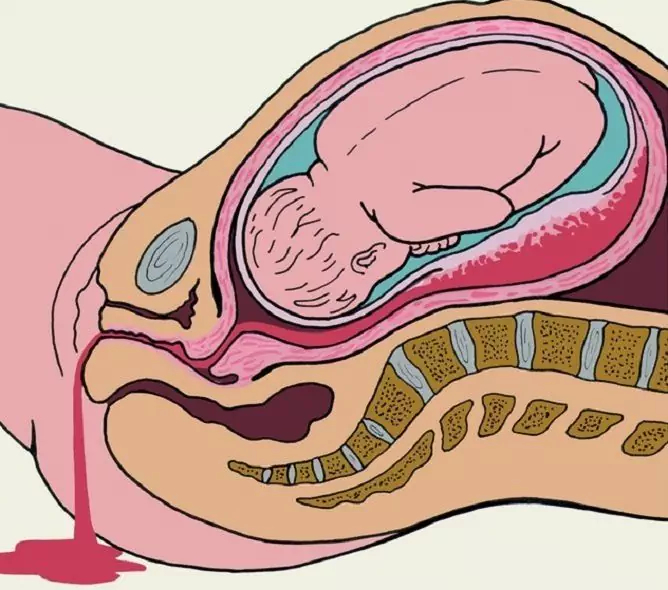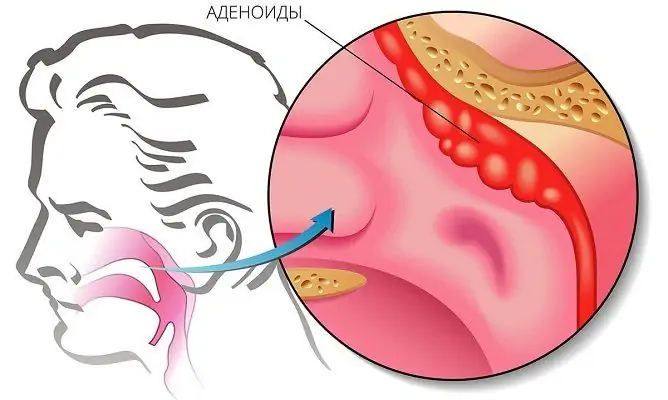- Author Rachel Wainwright [email protected].
- Public 2023-12-15 07:39.
- Last modified 2025-11-02 20:14.
Dermatomycosis
The content of the article:
- Causes and risk factors
- Forms of the disease
- Dermatomycosis symptoms
- Diagnostics
- Dermatomycosis treatment
- Possible complications and consequences
- Forecast
- Prevention
Dermatomycosis is a dermatological disease in which the skin and its appendages (nails and hair) are affected by microscopic fungi.
Dermatomycosis is widespread, the incidence in the general population is approximately 20%. Fungal pathology accounts for about 40% in the overall structure of skin diseases. One of the most common forms of the disease is ringworm of the feet, which is most common in young men.

Source: magicworld.su
Causes and risk factors
The reason for the predominance of dermatomycosis in the general structure of fungal diseases is the constant contact of the skin with the environment.
The causative agents of human dermatomycosis are anthropophilic (the source of infection is a sick person), zoophilic (the source of infection is infected cats, dogs, horses and other animals) or geophilic (the infectious agent is in the soil) microscopic fungi. Infection occurs through direct contact with a sick person, animal, as well as with soil contaminated with household items, and self-infection is not excluded. Often, infection occurs in public places (swimming pools, baths, saunas, beaches, hairdressers), in organized children's groups.
Risk factors for the development of dermatomycosis include:
- immunodeficiency states;
- endocrine disorders;
- chronic infectious diseases;
- metabolic diseases;
- the impact on the body of adverse environmental factors;
- stressful situations;
- violation of the integrity of the skin;
- advanced age;
- overweight;
- poor nutrition;
- long-term use of antibacterial drugs;
- excessive sweating;
- wearing clothes, especially underwear, made of synthetic materials.
Forms of the disease
Depending on the depth of the lesion, there are:
- epidermomycosis;
- superficial dermatomycosis;
- deep dermatomycosis.
Depending on the localization, dermatomycosis of smooth skin, scalp, feet, groin, nails is distinguished.
Dermatomycosis of the feet can have a squamous, intertriginous, dyshidrotic form.
By the type of pathogen:
- keratomycosis (pityriasis versicolor, nodular microsporia);
- candidiasis;
- dermatophytosis (favus, epidermophytosis, trichophytosis, rubrophytosis);
- deep mycoses (blastomycosis, sporotrichosis, aspergillosis);
- pseudomycosis (trichomycosis, erythrasma, actinomycosis).
Dermatomycosis symptoms
The symptoms of dermatomycosis depend on the type of pathogen, its virulence, area and localization of the lesion, as well as on the duration of the disease.
With dermatomycosis of smooth skin, pink or red rounded rashes appear with enlightenment in the center, moist areas of the rash become crusted, the edges of the lesion are flaky, accompanied by itching.

Source: mirmedikov.ru
When the fungus affects the nail plates (onychomycosis), they thicken, and over time they become deformed, dead cells accumulate under the nail, the nail plate exfoliates and gradually collapses. The pathological process can also involve the nail fold. Fungus often affects the nails of the lower extremities.

Source: parazitoved.ru
When the scalp is affected, a papular rash, furuncle-like nodes occurs in the affected area. The affected areas are usually hyperemic, edematous, scaly, the patient complains of itching and soreness. Hair on the affected area breaks off or falls out.

Source: gribokube.ru
Dermatomycosis of the inguinal region is characterized by the appearance in the region of the inguinal folds of pink spots of a round shape with indistinct outlines. The pathological process involves the skin of the perianal region, perineum, inner thighs. As the spots progress, the spots enlarge and merge. On the periphery of the lesion, bubbles appear, which is accompanied by itching, burning, sometimes soreness, then the rash becomes covered with scales and crusts.

Source: idermatolog.ru
With the development of the squamous form of dermatomycosis of the feet, the skin in the interdigital folds of the lower extremities is first affected. The skin on the affected areas begins to peel off, which is not accompanied by any subjective sensations. With the progression of the disease, the skin of the lateral surface of the feet is involved in the pathological process. Elements of the rash merge with each other, covered with light scales. In some cases, peeling is accompanied by the formation of weeping itchy rashes.

Source: treat-fungus.rf
With an intertriginous form of dermatomycosis of the feet, patients complain of hyperemia, swelling of interdigital folds, the occurrence of cracks and weeping erosions.
With dyshidrotic dermatomycosis of the feet, numerous bubbles appear in the area of the sole, toes and arch of the foot, which eventually open up with the formation of erosion.
With the development of pityriasis lichen on the skin of the back, chest, abdomen, neck, upper and lower extremities, scaly spots of irregular shape of light brown, yellowish-pink or cream color appear.

Source: olishae.ru
With microsporia and trichophytosis, mainly smooth skin and scalp are affected. At the same time, on the skin of the head, a few well-defined round spots appear, which are covered with grayish-white scales. Hair in the affected area breaks off at a height of 4-5 mm above the skin level. When smooth skin is damaged, concentric plaques appear on it, which are surrounded by a roller of small vesicles and serous crusts. In young children, with the development of superficial trichophytosis of the scalp, there is a loss of color and shine of hair, their breaking off at the level of the skin with the formation of rounded bald spots covered with small scales.

Source: med-sklad1.ru
With the development of the favus on the scalp, favose shields (scutules) form, which look like thick dry crusts of yellow or light brown color and emit an unpleasant (stagnant) odor. The edges of the scutula are raised above the skin surface, the center is depressed. The hair in the affected area becomes thinner and easily pulled out along with the root. With the progression of the pathological process, the death of hair follicles and cicatricial atrophy of the skin occur.

Source: doktorvolos.ru
Diagnostics
The diagnosis is established on the basis of anamnesis data, clinical picture, laboratory results.
Before the diagnosis is made, it is not recommended to treat the affected skin areas with antiseptic solutions, as this can blur the clinical picture and lead to a diagnostic error.
During microscopy of biological material taken from lesions (epidermal scales, hair, horny masses from the nail bed, etc.), mycelium, hyphae or spores of the pathogen are found. Sowing scrapings from the affected area on nutrient media (universal and selective) allows you to identify an infectious agent and determine its sensitivity to antimycotic drugs. Laboratory determination of antibodies to the pathogen in the patient's blood may be required.
An informative method for diagnosing some dermatomycosis is the examination of the skin under a Wood lamp - a greenish-blue, reddish, brown or golden-yellow glow of scales in the affected areas is revealed.
Before prescribing systemic therapy for dermatomycosis, especially for elderly patients, a general blood and urine test, a biochemical blood test (hepatic transaminases, bilirubin, creatinine), as well as an ultrasound examination of the abdominal cavity and kidneys, electrocardiography are prescribed. This allows you to identify patients for whom systemic therapy is contraindicated.
Differential diagnosis is carried out with psoriasis, eczema, neurodermatitis, vitiligo, seborrhea, syphilitic leukoderma.
Dermatomycosis treatment
The treatment regimen for dermatomycosis is drawn up only after laboratory confirmation of the diagnosis. The therapy is carried out on an outpatient basis. The effectiveness of etiotropic treatment of dermatomycosis increases with the correction of pathological conditions that contributed to the development of the disease.
Drug therapy consists in the use of external (in the form of an ointment, gel, cream, paste) antimycotics. In severe or resistant to therapy cases, a combination of local and systemic antimycotic drugs is used, treatment is supplemented with antihistamines, glucocorticoids, and vitamin complexes. The lesions are treated daily with antiseptic solutions. The hair on the affected areas is usually shaved off and the crusts removed. When a secondary bacterial infection is attached, antibacterial drugs are prescribed.
When treating elderly patients, the possible interaction of systemic antimycotic drugs with constantly taken drugs should be taken into account.
In addition to the main treatment, physiotherapeutic procedures (electrophoresis, magnetotherapy, laser therapy, decimeter therapy, darsonvalization) can be performed.
In case of nail damage, if necessary, surgical removal of the nail plate is performed.
During treatment, a patient with dermatomycosis should avoid close contact with others. During therapy, the patient's belongings (clothes, shoes, personal hygiene items) are periodically disinfected in order to prevent re-infection. Family members of the patient are subject to examination and, if necessary, treatment.
The effectiveness of therapy is assessed based on the results of control studies.
Possible complications and consequences
Dermatomycosis can be complicated by the occurrence of allergic reactions, the addition of a secondary bacterial infection with the development of pyoderma, mycotic eczema.
Forecast
With timely, correctly selected treatment, the prognosis is favorable.
In the absence of adequate treatment, dermatomycosis becomes persistent and subsequently requires long-term therapy.
Prevention
In order to prevent the development of dermatomycosis, it is recommended:
- timely treatment of diseases that contribute to the development of immunodeficiency;
- increased immunity;
- disinfection of hairdressing and manicure supplies;
- exclusion of contact with stray animals;
- avoiding the use of someone else's clothes and shoes, personal hygiene items;
- selection of clothing made from natural fabrics.
YouTube video related to the article:

Anna Aksenova Medical journalist About the author
Education: 2004-2007 "First Kiev Medical College" specialty "Laboratory Diagnostics".
The information is generalized and provided for informational purposes only. At the first sign of illness, see your doctor. Self-medication is hazardous to health!






